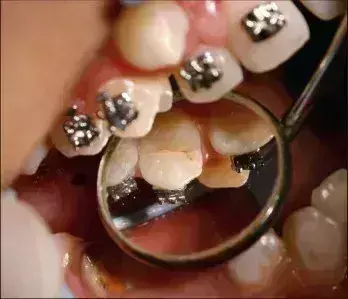- Home
- Medical news & Guidelines
- Anesthesiology
- Cardiology and CTVS
- Critical Care
- Dentistry
- Dermatology
- Diabetes and Endocrinology
- ENT
- Gastroenterology
- Medicine
- Nephrology
- Neurology
- Obstretics-Gynaecology
- Oncology
- Ophthalmology
- Orthopaedics
- Pediatrics-Neonatology
- Psychiatry
- Pulmonology
- Radiology
- Surgery
- Urology
- Laboratory Medicine
- Diet
- Nursing
- Paramedical
- Physiotherapy
- Health news
- Fact Check
- Bone Health Fact Check
- Brain Health Fact Check
- Cancer Related Fact Check
- Child Care Fact Check
- Dental and oral health fact check
- Diabetes and metabolic health fact check
- Diet and Nutrition Fact Check
- Eye and ENT Care Fact Check
- Fitness fact check
- Gut health fact check
- Heart health fact check
- Kidney health fact check
- Medical education fact check
- Men's health fact check
- Respiratory fact check
- Skin and hair care fact check
- Vaccine and Immunization fact check
- Women's health fact check
- AYUSH
- State News
- Andaman and Nicobar Islands
- Andhra Pradesh
- Arunachal Pradesh
- Assam
- Bihar
- Chandigarh
- Chattisgarh
- Dadra and Nagar Haveli
- Daman and Diu
- Delhi
- Goa
- Gujarat
- Haryana
- Himachal Pradesh
- Jammu & Kashmir
- Jharkhand
- Karnataka
- Kerala
- Ladakh
- Lakshadweep
- Madhya Pradesh
- Maharashtra
- Manipur
- Meghalaya
- Mizoram
- Nagaland
- Odisha
- Puducherry
- Punjab
- Rajasthan
- Sikkim
- Tamil Nadu
- Telangana
- Tripura
- Uttar Pradesh
- Uttrakhand
- West Bengal
- Medical Education
- Industry
One-step adhesive system tied to development of greatest number of new white spot lesions and mineral loss

One-step adhesive system tied to development of greatest number of new white spot lesions and mineral loss suggests a new study published in The Angle Orthodontist
A study was done to compare the development of white spot lesions (WSLs) during fixed orthodontic therapy among a conventional three-step bonding system, a self-etching primer bonding system, and a one-step adhesive bonding system.
Seventy-five patients were randomly allocated into three groups (group 1, conventional bonding system, n = 25; group 2, self-etch primer, n = 25; group 3, primer mixed with adhesive composite, n = 25). Quantitative light-induced fluorescence (QLF) was used to assess WSL parameters. Images were captured and then analyzed before treatment and at 2 months and 4 months after bond up. Lesion area (pixels), mean fluorescence loss (ΔF), and the number of newly developed WSLs were compared within and among the three groups. The significance level was P ≤ .05.
Results
The mean increase in lesion area was 31.3 ± 2.8 pixels, 38.4 ± 4.3 pixels, and 119.5 ± 5.3 pixels for groups 1, 2, and 3, respectively (P ≤ .001). For ΔF, the loss was 3.3% ± 0.3%, 4.4% ± 0.2%, and 6.6% ± 0.2% for groups 1, 2, and 3, respectively. These changes were significantly different (P ≤ .01 to P ≤ .001). The incidence of newly developed lesions was 9.5 WSLs in group 1, 10 WSLs in group 2, and 15.9 WSLs in group 3.
The lack of primer contributed to the development of a larger number of and more severe white spot lesions (WSLs).
Reference:
Ola G. Abu Horan, Susan N. Al-Khateeb; Comparison of three orthodontic bonding systems in white spot lesion development: a randomized clinical trial. Angle Orthod 2023; doi:https://doi.org/10.2319/111422-781.1
Keywords:
One-step, adhesive system, tied, development, greatest, number, new white, spot, lesions, mineral loss, The Angle Orthodontist, Self-etch primer, One-step adhesive, Conventional bonding system, WSLs, QLF
Dr. Shravani Dali has completed her BDS from Pravara institute of medical sciences, loni. Following which she extensively worked in the healthcare sector for 2+ years. She has been actively involved in writing blogs in field of health and wellness. Currently she is pursuing her Masters of public health-health administration from Tata institute of social sciences. She can be contacted at editorial@medicaldialogues.in.
Dr Kamal Kant Kohli-MBBS, DTCD- a chest specialist with more than 30 years of practice and a flair for writing clinical articles, Dr Kamal Kant Kohli joined Medical Dialogues as a Chief Editor of Medical News. Besides writing articles, as an editor, he proofreads and verifies all the medical content published on Medical Dialogues including those coming from journals, studies,medical conferences,guidelines etc. Email: drkohli@medicaldialogues.in. Contact no. 011-43720751


